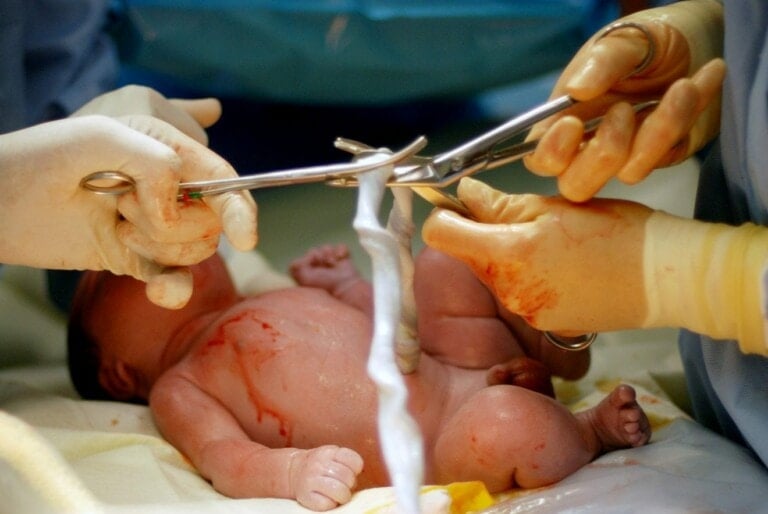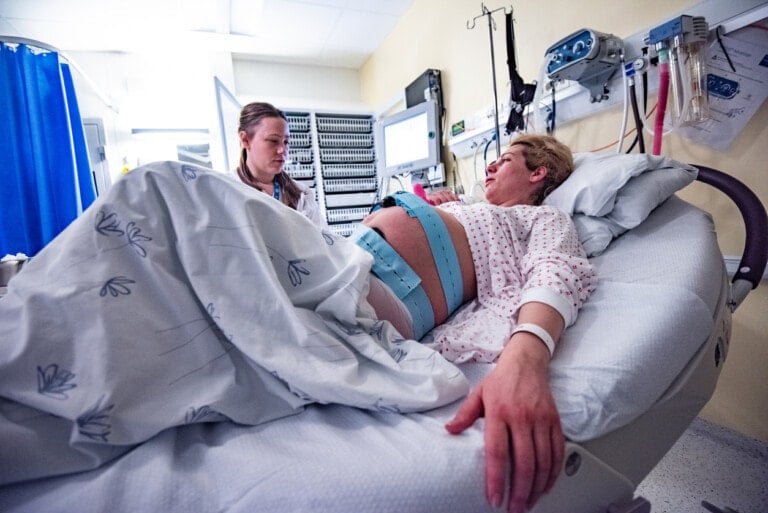“When is your due date?” Most women will hear this question multiple times during their pregnancy. Once you found out you were expecting, circling this monumental date on a calendar was probably one of the first tasks you completed. However, what happens when things don’t go quite as planned? Enter preterm birth.
A preterm birth can occur spontaneously or may be anticipated because of certain medical conditions.1 Delivering a preterm baby comes with its own language and potential complications. This article will dive into the often unexpected experience of premature labor, preterm birth, and premature babies.
What Is Preterm Birth?
A normal pregnancy lasts 40 weeks or about nine months. Health professionals calculate a baby’s due date from the first day of your last menstrual cycle.2 Babies need time to grow and develop inside your womb before birth. When a woman goes into labor before 37 weeks, it is called preterm labor. If labor continues and the baby is born, the birth is called a preterm birth, and the baby is called a preterm infant.3,4,5
Preterm vs. Premature: Is There a Difference?
“Preterm” and “premature” mean the same thing and can be used interchangeably. A woman may experience preterm labor, but doctors may be able to stop her from delivering prematurely. So, premature labor does not always result in a preterm birth or preterm baby.3
What Causes Preterm Birth?
Experts feel several factors may contribute to preterm births, including psychological, biological, genetic, and medical components.1,6 These births are often spontaneous, meaning a woman suddenly and unexpectedly goes into labor and delivers a preterm baby before 37 weeks. Most times, the cause is unknown. However, infections or other inflammatory processes can precipitate premature labor. Women who have one premature baby are at higher risk of having another preterm baby.1,3,4
If the woman or fetus has medical complications and continuing the pregnancy may do more harm than good, tough choices need to be made. Although healthcare providers typically make every effort to prolong a pregnancy, sometimes it is necessary to deliver early. Doctors may induce labor, resulting in a vaginal delivery, or perform a Cesarean section. It is possible to have a preterm birth without preterm labor with a Cesarean section. Preeclampsia and cholestasis of pregnancy are two examples that may lead to a medically necessary preterm birth.1,4
Preterm Birth Symptoms
Preterm labor usually precedes a spontaneous preterm birth. Labor occurring anywhere between weeks 20 and 36 of pregnancy is considered premature. Although women may feel irregular contractions or Braxton Hicks during pregnancy, premature labor includes changes in the cervix. The cervix begins to prepare for birth by softening, thinning, and dilating, but it is too early.3,7
Regular and frequent contractions or tightenings around your abdomen are cause for concern, and you should seek medical help immediately.4 Other signs and symptoms of preterm labor include:3,4,7
- Vaginal discharge like bleeding or leaking fluid
- Rupture of membranes known as “water breaking“
- Constant, dull, and aching lower back pain
- Abdominal cramping that may be similar to menstrual cramps
- Pressure in the pelvic or lower abdominal areas (it may feel like your baby is pushing down)
Seek medical care immediately if experiencing any of these signs or symptoms.
Risk Factors for Preterm Labor
A woman’s family and health histories can affect her risk for preterm labor, but they may be out of her control. Lifestyle choices also play a role, and you can reduce some risks by making healthier choices. However, even if you do everything right, sometimes preterm labor happens without warning.3,4,8
Women who already had preterm labor in one pregnancy are more likely to experience it with future pregnancies. Carrying more than one baby, like twins or triplets, also increases a woman’s risk, as does a family history of preterm labor in close female relatives.3,4,8
More risk factors for preterm labor and birth include:3,4,8
- Pregnancy complications such as preeclampsia, gestational diabetes, and intrahepatic cholestasis of pregnancy
- Getting pregnant within six months of giving birth
- Conception through in vitro fertilization
- A shortened or incompetent cervix
- Certain disorders or conditions affecting the fetus
- Placenta previa, where the placenta implants over part or all of the cervical opening
- Existing pre-pregnancy medical conditions like diabetes, genetic diseases, or blood clotting disorders
- Women older than 35 years and teenagers
- Sexually transmitted infections
- Being obese or underweight
- Smoking, alcohol, or drug use
- Domestic violence
How Common Is Preterm Labor?
In 2022, preterm births accounted for about 10% of all births in the United States. African American women had a higher rate at about 14%, white women were at 9.4%, while Hispanic women had a 10.4% rate. Almost 60% of women carrying multiples like twins or triplets result in preterm births.5,9
Preventing Preterm Labor: Can It Be Done?
You may prevent preterm labor by adjusting for controllable risk factors. Lifestyle choices are a good place to start and include:3,4
- Starting prenatal care by scheduling a visit with your provider as soon as you think you may be pregnant
- Maintaining a healthy pre-pregnancy and pregnancy weight
- Seeking medical assistance immediately if you have any signs and symptoms of preterm labor
- If you have a history of preterm labor or birth, talk to your provider about possible additional interventions or monitoring.
- Taking care of any ongoing pre-pregnancy medical conditions
- Spacing pregnancies at least 18 months apart
- Not using alcohol or drugs or smoking while pregnant
However, other risk factors, like a shortened or incompetent cervix, may be out of your control. The cervix should remain tightly closed until it dilates in labor, but with these conditions, the cervix is weakened and may result in a premature birth or loss of a fetus. Healthcare providers may attempt to prolong a pregnancy using a surgical procedure known as a cervical cerclage. The process involves closing the cervix with stitches. Your physician will remove the cerclage before you give birth.3,10
Doctors gave progesterone shots to women in the past, but they are no longer considered effective in the prevention of premature labor. Additionally, contrary to popular belief, bed rest is not generally recommended.3,10
What Are the Short-Term Effects of Preterm Birth?
Babies born early have immature bodies and brains. They are not simply tiny versions of full-term infants. Full-term babies have more time for their systems and organs to develop within their mother’s womb. A premature baby is born before it can fully mature, and most children will require hospitalization in a neonatal intensive care unit (NICU). Health providers use medical technology to continue ” growing” the baby outside the womb. Prematurity is a leading cause of death and disability for infants, especially for those born before 32 weeks.5,11
Depending on when a baby is born, they could spend days, weeks, or months in the hospital before going home with their parents. The closer a baby gets to 40 weeks, the better their brains, lungs, skin, digestive system, eyes, and other processes develop. A preterm baby may require breathing support with ventilators, tube feedings, and multiple other life-saving interventions.9,11
What Are the Long-Term Effects of Preterm Birth?
A preterm baby may suffer long-term effects from an early birth. Besides the potential complications from being born early, premature babies may have experienced other prenatal situations, like being deprived of oxygen to vital organs. Preemies typically need specialized care in the short term after birth and specific follow-up once they go home.5,11,12
Long-term effects of preterm birth may include:5,11,12
- Learning disabilities and developmental delays
- Cerebral palsy
- Vision problems, including blindness
- Hearing problems
- Respiratory problems like asthma
- Mental health conditions
- Behavior problems
Preterm births can carry significant consequences for premature babies and their families.
Starting prenatal care early is important because it improves health outcomes for women and infants. If you experience any signs and symptoms of preterm labor, seek medical attention immediately.
































